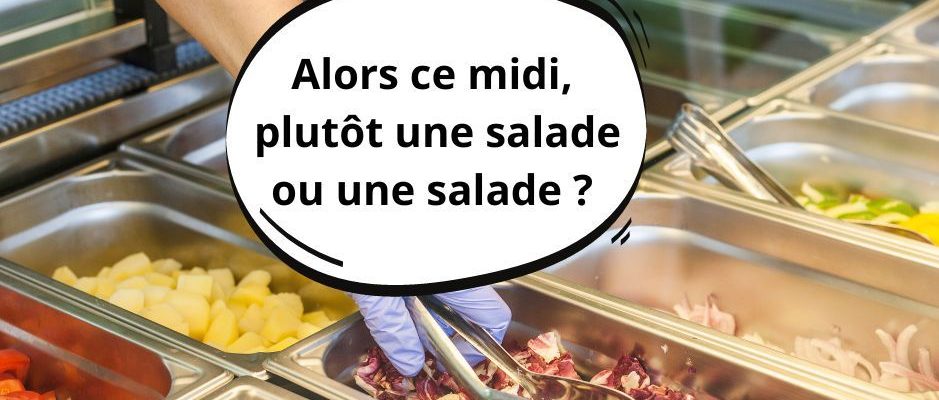Krispy Kreme, an American brand specializing in donuts, has announced its intention to settle in France by the end of the year. A planned landing that confirms a trend that has emerged since 2016: single-product catering. Sweet or savory, during your strolls in town, you must have come across one of these brands. Salad bar, bakery making only brioche or éclairs, cordon-bleu bar, restaurant offering only pasta… For almost every food item, you are sure to find a brand of this type – especially if you live in Paris.
The same concept each time. Take a basic product, either trendy – stop overdoing the truffle please – or madeleine de Proust. Decline it to infinity or almost and offer the customer the possibility of customizing it. This last point is very important: it is up to the consumer to make the final choice of filling and toppings – these small supplements that can be added to the base product.
This in order to respond to two essentials of the time: instagramabilisation and premiumization. The latter consists of making a basic product “nobler” by giving the consumer the choice to make his “own” meal: he is the one who has the last word on supplements and finishing products. Who has never bought a poke bowl for 16 euros when they would never put that price in a simple rice salad to take away? “Product personalization is decisive these days,” argues Clémentine Hugol-Gential, professor and specialist in contemporary food issues at the University of Burgundy.
“A good formula to get started”, not to last
Principle of communicating vessels obliges, this personalization also helps in the second point, instagramabilisation: the customer shares more easily on the networks his meal if he has the impression of having participated in the design. Insta advertising by the consumer is very nice, by influencers, it’s much better. By scrolling through TIkTok, Instagram or Youtube, you must have heard an influencer foodies falsely questioning: “Do you know this restaurant with its incredibly-innovative-and-fun concept? In-any-case-me-I-tested-and-I-am-a-fan,-it-is-hyper-original”.
Pascal Madry, director of the Institute for Cities and Commerce, explains: “Single-product formulas allow you to quickly stand out from the very abundant competition. Another advantage for our expert is that this minimalist positioning makes it possible to “optimize the use of the kitchens and to be able to more easily meet the deadlines for remote orders. In short, it’s a good formula to get started and quickly generate volumes. »
Until indigestion and shortness of breath
But it is well known, in life, the hardest thing is not to reach the top but to stay there. If you have seen many such restaurants opening, you must have also noticed closures just as numerous and rapid as the launches. Even your old favorite lentil bar has gone out of business, and in truth, it doesn’t matter much to you… because after the first months of discovery, you quickly got bored and ended up abandoning this place.
This is precisely the whole problem. The strength of the concept remains its biggest limit, even its unsurpassable glass ceiling: by dint of eating the same product, we quickly go around in circles. Bernard Boutboul, president of Gira, a firm specializing in catering, does not think otherwise: “The mono-product has no interest, and therefore does not allow customer loyalty, which is essential to last in the long term. . “And by betting too much on the hype, you end up burning your wings, continues Clémentine Hugol-Gential: “Basing everything on the same product, as soon as it is no longer trendy, the market collapses. After all, the adage is well known: don’t put all your eggs in one basket.
A varied offer will always trump an offer
And even if the product persists in morals and hearts – cordon-bleu, pasta and other inescapable classics of our taste buds, the problem remains the same. “Any restaurant is condemned to renew its menu if it wants to maintain, or even develop, its clientele,” concludes Pascal Madry. Bernard Boutboul takes the example of a flan restaurant. As good as they are, why go there rather than to a more varied bakery to devour a flan or something?
This summer, the fried chicken chain KFC, offered major publicity for its… vegan offer, far from the barnyard of which it claims to be. A necessary choice, according to Bernard Boutboul: “It’s the only way to last: expand your offer without denying yourself. »
Luxury brioche or pasta shells too muchnothing changes
With such a predictable glass ceiling and an estimated lifespan of just two years, why are so many single-product concepts still opening? Simple denial and overconfidence, according to the president of Gira. “Restorators who start think that the others have failed because their product was not good enough, and that their offer, more qualitative, will be enough to make the difference”. But again, the problem is not the quality, but the lack of variety.

Take Guy Savoy. It’s hard to accuse him of being a painter in the kitchen – his restaurant has had three stars for twenty years and still has two stars. In 2015, the chef launched Goût de brioche, a monomaniac brand for this unique pastry. “It was very good, but after a year, it was closed,” emphasizes Bernard Boutboul.
And sometimes the concept is doomed as soon as it opens. At the beginning of the year, a new ephemeral bar with shells, sold between 11 and 15 bucks a bowl all the same, had aroused more ridicule than queues. Parisian gentrification has its limits, the concept of mono-product as well.

